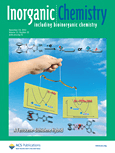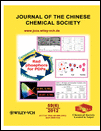
Journal of Organometallic Chemistry
Scope & Guideline
Bridging Organic and Inorganic through Cutting-edge Studies
Introduction
Aims and Scopes
- Organometallic Synthesis:
The journal emphasizes the synthesis of novel organometallic compounds, including complexes with unique ligands, metal clusters, and hybrid materials. - Catalysis and Reaction Mechanisms:
A core scope includes the exploration of organometallic catalysts in various chemical reactions, focusing on reaction mechanisms, selectivity, and efficiency. - Material Science and Applications:
The journal covers the development and application of organometallic compounds in materials science, including their use in photovoltaics, sensors, and drug delivery systems. - Environmental and Green Chemistry:
Research on sustainable practices in organometallic chemistry, including green synthesis methods and applications in environmental remediation, is a significant aspect. - Biological Applications:
The journal publishes studies that investigate the biological activity of organometallic compounds, including their potential as therapeutic agents or in bioimaging.
Trending and Emerging
- Sustainable and Green Chemistry:
A growing trend towards environmentally friendly synthesis methods and the application of organometallic compounds in green chemistry showcases the journal's commitment to sustainability. - Nanomaterials and Hybrid Systems:
Research involving organometallic nanoparticles and hybrid systems that combine organometallics with organic or inorganic materials is on the rise, indicating a focus on multifunctional applications. - Biocompatible Organometallics:
There is an increasing interest in the biological applications of organometallic compounds, particularly in drug design and delivery systems, reflecting the intersection of chemistry and biomedical research. - Advanced Catalytic Systems:
Emerging studies focus on the development of novel catalytic systems using organometallic compounds for complex transformations, highlighting advancements in catalytic efficiency and selectivity. - Computational Chemistry:
The integration of computational methods in understanding organometallic systems is gaining momentum, reflecting the journal's embrace of theoretical approaches to complement experimental findings.
Declining or Waning
- Traditional Organometallic Theory:
There has been a noticeable decline in papers focused solely on classical organometallic theory without practical applications, as the field moves towards more application-oriented research. - Basic Coordination Chemistry:
Research centered on fundamental coordination chemistry of well-established ligands and metals has decreased, possibly overshadowed by more complex systems and hybrid materials. - Synthesis of Inorganic Compounds:
Papers focusing on the synthesis of purely inorganic compounds without organometallic relevance have diminished, as the integration of organic components is prioritized.
Similar Journals

INORGANIC CHEMISTRY
Shaping the Future of Inorganic Science Through ResearchInorganic Chemistry, published by the American Chemical Society, stands at the forefront of the field of inorganic and physical chemistry, boasting an impressive impact in the academic community with a 2023 classification in the Q1 quartile across multiple categories including Inorganic Chemistry and Miscellaneous Chemistry. Since its inception in 1962, this esteemed journal has been a crucial platform for disseminating groundbreaking research, innovative methodologies, and comprehensive reviews integral to understanding the complex behaviors of inorganic materials. With a ranking of #12 out of 79 in Inorganic Chemistry and #37 out of 189 in Physical and Theoretical Chemistry according to Scopus metrics, Inorganic Chemistry has established itself as a premier destination for researchers, professionals, and students alike, eager to stay abreast of pivotal developments and trends in the discipline. Despite being a subscription-based journal, its esteemed reputation and critical contributions make it essential for anyone engaged in the exploration of inorganic chemical phenomena. As it prepares to converge into a new era by 2024, the journal continues to embody excellence and innovation, fostering a dynamic exchange of ideas essential for advancing this vibrant area of science.

Heterocyclic Letters
Pioneering Discoveries in Medicinal and Agricultural ChemistryHeterocyclic Letters is an esteemed journal in the field of synthetic organic chemistry, published by RAMAN PUBL. With ISSN 2231-3087 and E-ISSN 2230-9632, this journal aims to disseminate original research and innovative findings related to heterocyclic compounds, which play a crucial role in medicinal chemistry, material science, and agricultural chemistry. Heterocyclic Letters provides a platform for researchers, professionals, and students to share their insights and advancements, thus fostering academic collaboration and knowledge transfer. The journal is dedicated to maintaining high-quality standards in research publication, making it an essential resource for anyone focused on the latest developments in heterocyclic chemistry. Although it does not currently offer Open Access options, the journal’s rigorous peer-review process ensures that only the most credible and impactful studies are published, contributing significantly to the advancement of the field.

RUSSIAN JOURNAL OF ORGANIC CHEMISTRY
Fostering Knowledge in Organic Chemistry DynamicsRUSSIAN JOURNAL OF ORGANIC CHEMISTRY, published by MAIK NAUKA/INTERPERIODICA/SPRINGER, stands as a pivotal resource in the realm of organic chemistry, catering to an audience of researchers, professionals, and students keen on the latest advancements in this dynamic field. With an ISSN of 1070-4280 and E-ISSN of 1608-3393, this journal has been a fixture in academic literature since its inception in 1996 and continues to play a significant role as it converges towards 2024. Despite currently holding a Q4 ranking in organic chemistry and a modest placement in the Scopus ranks, the journal offers valuable insights and contributions that reflect the ongoing research and trends within the discipline. Though it does not operate under an open access model, the journal provides essential studies and reviews that enhance scientific dialogue and innovation. Located in the United States, the journal supports the advancement of organic chemistry, fostering a deeper understanding of complex chemical interactions and methodologies.

HETEROCYCLIC COMMUNICATIONS
Transforming Organic Chemistry with Every PublicationHeterocyclic Communications, published by De Gruyter Poland Sp. z o.o., is a leading open-access journal dedicated to the field of organic chemistry. With its ISSN 0793-0283 and E-ISSN 2191-0197, this journal has been disseminating significant research findings since its inception in 1994, and continues to contribute to the scientific community through 2024. Based in Germany, Heterocyclic Communications occupies a reputable position, classified in the third quartile (Q3) of organic chemistry journals with a Scopus rank of #119 out of 211, indicating its growing influence in the field. The journal is committed to fostering scholarly communication and knowledge exchange among researchers, professionals, and students, providing a platform for innovative studies and insights into heterocyclic compounds and their applications. As an open-access journal since 2019, it ensures that valuable research is readily available to a global audience, enhancing collaboration and advancement in organic chemistry research.

RUSSIAN CHEMICAL BULLETIN
Bridging Theory and Application in Chemistry.RUSSIAN CHEMICAL BULLETIN, published by SPRINGER, serves as a pivotal resource in the field of general chemistry, covering a wide array of topics that impact both theoretical and applied chemistry. With an ISSN of 1066-5285 and a presence since 1993, this journal provides a platform for disseminating significant research findings, practical applications, and novel methodologies within the broader chemistry community. While it currently holds a Q3 ranking in the Chemistry (miscellaneous) category and occupies the 230th position out of 408 in the Scopus rankings, its reputation continues to grow, fostering collaboration and innovation among researchers and professionals alike. Although the journal does not offer an open-access model, it is committed to making findings accessible within the academic community, ensuring that valuable insights can inform future research. With an anticipated convergence of studies extending to 2024, the RUSSIAN CHEMICAL BULLETIN remains an essential reference for those dedicated to advancing chemical science.

ZEITSCHRIFT FUR PHYSIKALISCHE CHEMIE-INTERNATIONAL JOURNAL OF RESEARCH IN PHYSICAL CHEMISTRY & CHEMICAL PHYSICS
Leading the Way in Chemical Research and DiscoveryZEITSCHRIFT FUR PHYSIKALISCHE CHEMIE-INTERNATIONAL JOURNAL OF RESEARCH IN PHYSICAL CHEMISTRY & CHEMICAL PHYSICS, published by WALTER DE GRUYTER GMBH, is a highly regarded platform for researchers in the field of physical chemistry and chemical physics. With an ISSN of 0942-9352 and an E-ISSN of 2196-7156, this journal serves as a vital resource for the dissemination of original research, critical reviews, and insightful discussions that span theoretical and experimental investigations. Recognized for its quality, it holds a Q2 classification within the 2023 quartiles of Physical and Theoretical Chemistry and ranks 72nd out of 189 in the Scopus database, placing it in the 62nd percentile. The journal’s extensive publication history, originating from 1943, showcases its long-standing commitment to advancing the understanding of complex chemical phenomena. Although it currently does not offer open-access options, it continues to attract contributions from leading experts worldwide, making it essential reading for professionals, researchers, and students dedicated to pushing the frontiers of chemical science. The journal is located in Berlin, Germany, at Genthiner Strasse 13, D-10785 Berlin, Germany.

REVIEWS IN INORGANIC CHEMISTRY
Empowering Researchers with Invaluable InsightsREVIEWS IN INORGANIC CHEMISTRY, published by Walter de Gruyter GmbH, is a distinguished academic journal that serves as a vital resource for researchers, professionals, and students within the field of inorganic chemistry. With its ISSN 0193-4929 and E-ISSN 2191-0227, this journal has made a significant impact on the discipline, holding a commendable Q2 ranking in the 2023 category of Inorganic Chemistry, placing it in the 81st percentile among its peers according to Scopus rankings. Continuously published since its inception, with converged years spanning from 1985 to 1990 and 1992 to 2024, it features comprehensive reviews encompassing the latest advancements, methodologies, and theoretical frameworks in the subject. Researchers will find IDEAL insights and valuable discussions that keep them abreast of trends and challenges in the domain, essential for driving innovation and collaboration. The journal’s commitment to quality and rigorous peer review highlights its importance in advancing inorganic chemistry research, making it an indispensable tool for academic excellence.

JOURNAL OF THE CHINESE CHEMICAL SOCIETY
Bridging Theory and Practice in Chemical SciencesJOURNAL OF THE CHINESE CHEMICAL SOCIETY, published by WILEY-V C H VERLAG GMBH, is a vital resource in the field of chemistry, focusing on a broad array of topics pertinent to general chemistry and its advancing sub-disciplines. Established in 1954 and running through 2024, this journal serves as a significant platform for the dissemination of high-quality research, showcasing innovative findings and developments within the chemical sciences. With its Q3 category ranking and positioning at Rank #203 in General Chemistry per Scopus, it reflects the journal's commitment to research excellence and impact. While not an open-access publication, it ensures accessibility to a global audience, making it an essential tool for researchers, professionals, and students alike seeking to stay informed and engaged in the evolving landscape of chemistry.

MONATSHEFTE FUR CHEMIE
Unveiling Insights from Over a Century of Chemical ResearchMONATSHEFTE FUR CHEMIE, an esteemed journal published by Springer Wien, has been a significant contributor to the field of chemistry since its inception in the late 19th century. With a rich history spanning from 1880 to the present, this journal provides a platform for innovative research and comprehensive reviews in various areas of general chemistry. Although it currently holds a Q3 ranking in the miscellaneous category of chemistry, its commitment to maintaining high academic standards is reflected in its continued relevance and citation impact, as evidenced by its Scopus ranking. Researchers, professionals, and students engaged in chemical sciences will find this journal a valuable resource for advancing their knowledge and contributing to ongoing discussions in the field. For those looking to stay updated on the latest developments in chemistry while engaging with a storied publication, MONATSHEFTE FUR CHEMIE is a pivotal source of insightful content.

RSC Advances
Fostering Collaboration for a Brighter Scientific FutureRSC Advances, published by the Royal Society of Chemistry, is a leading open-access journal that has been a prominent platform for cutting-edge research since its inception in 2011. Recognized globally for its rigorous peer-review process, RSC Advances serves the dynamic fields of Chemical Engineering and Chemistry, holding prestigious rankings within the top quartile of academic journals in both areas. With its impact factor reflecting a growing influence, the journal currently occupies the Q1 category in Chemical Engineering and Q2 in Chemistry as of 2023. Researchers and professionals will find RSC Advances an essential resource for innovative studies and applications that advance scientific knowledge. Additionally, as an open access journal since 2017, it affords wider visibility and accessibility to groundbreaking research, fostering collaboration and engagement in the scientific community. Situated in Cambridge, UK, RSC Advances remains committed to its objective of disseminating high-quality research that catalyzes progress across various disciplines.